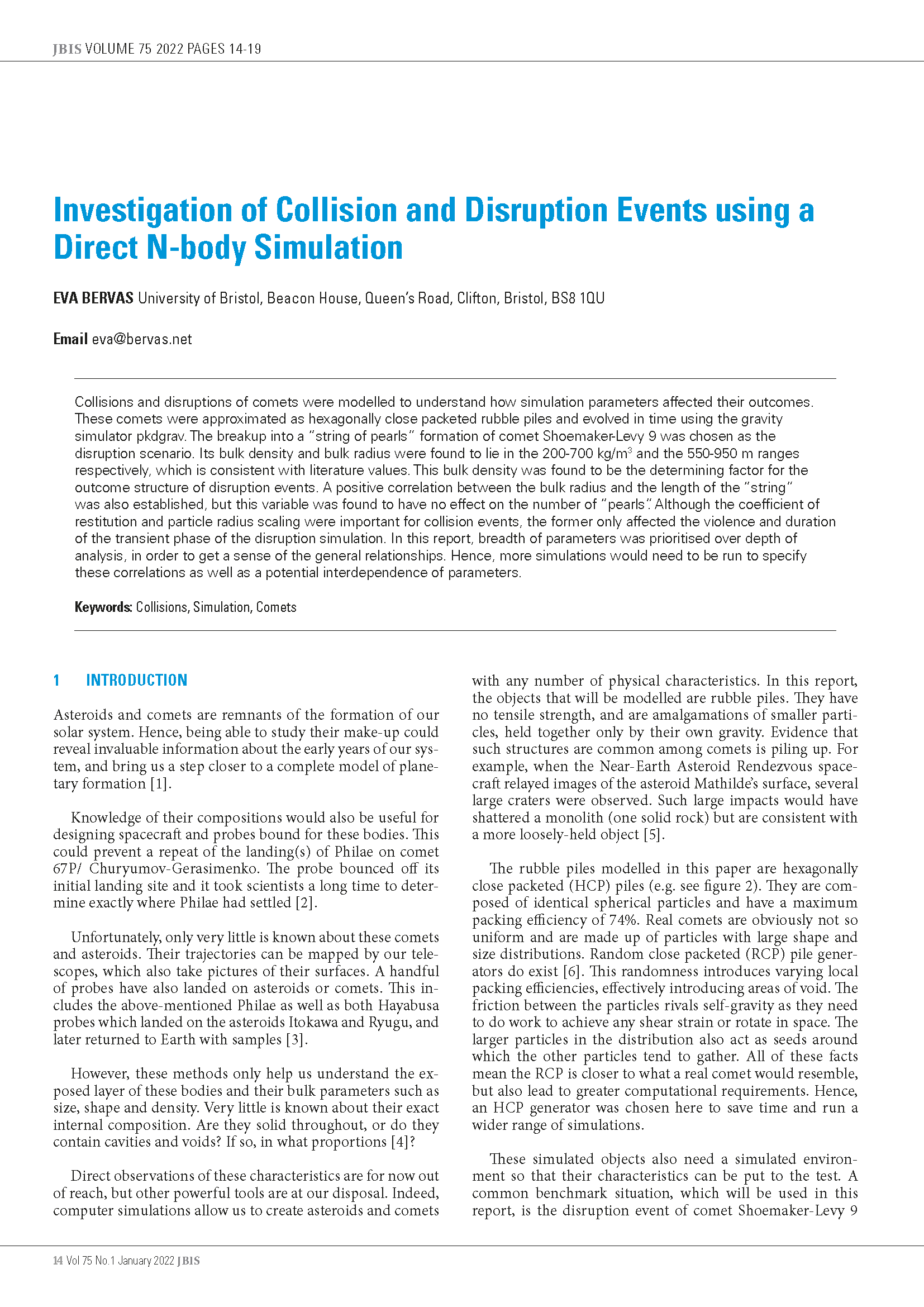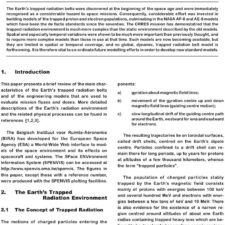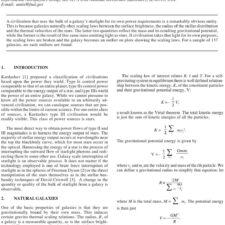Investigation of Collision and Disruption Events using a Direct N-body Simulation
£5.00
Eva Bervas (2022), JBIS, 75, pp.14-19
Refcode: 2022.75.014
DOI: n/a
Abstract:
Collisions and disruptions of comets were modelled to understand how simulation parameters affected their outcomes. These comets were approximated as hexagonally close packeted rubble piles and evolved in time using the gravity simulator pkdgrav. The breakup into a “string of pearls” formation of comet Shoemaker-Levy 9 was chosen as the disruption scenario. Its bulk density and bulk radius were found to lie in the 200-700 kg/m3 and the 550-950 m ranges respectively, which is consistent with literature values. This bulk density was found to be the determining factor for the outcome structure of disruption events. A positive correlation between the bulk radius and the length of the “string” was also established, but this variable was found to have no effect on the number of “pearls”. Although the coefficient of restitution and particle radius scaling were important for collision events, the former only affected the violence and duration of the transient phase of the disruption simulation. In this report, breadth of parameters was prioritised over depth of analysis, in order to get a sense of the general relationships. Hence, more simulations would need to be run to specify these correlations as well as a potential interdependence of parameters.
Keywords: Collisions, Simulation, Comets





